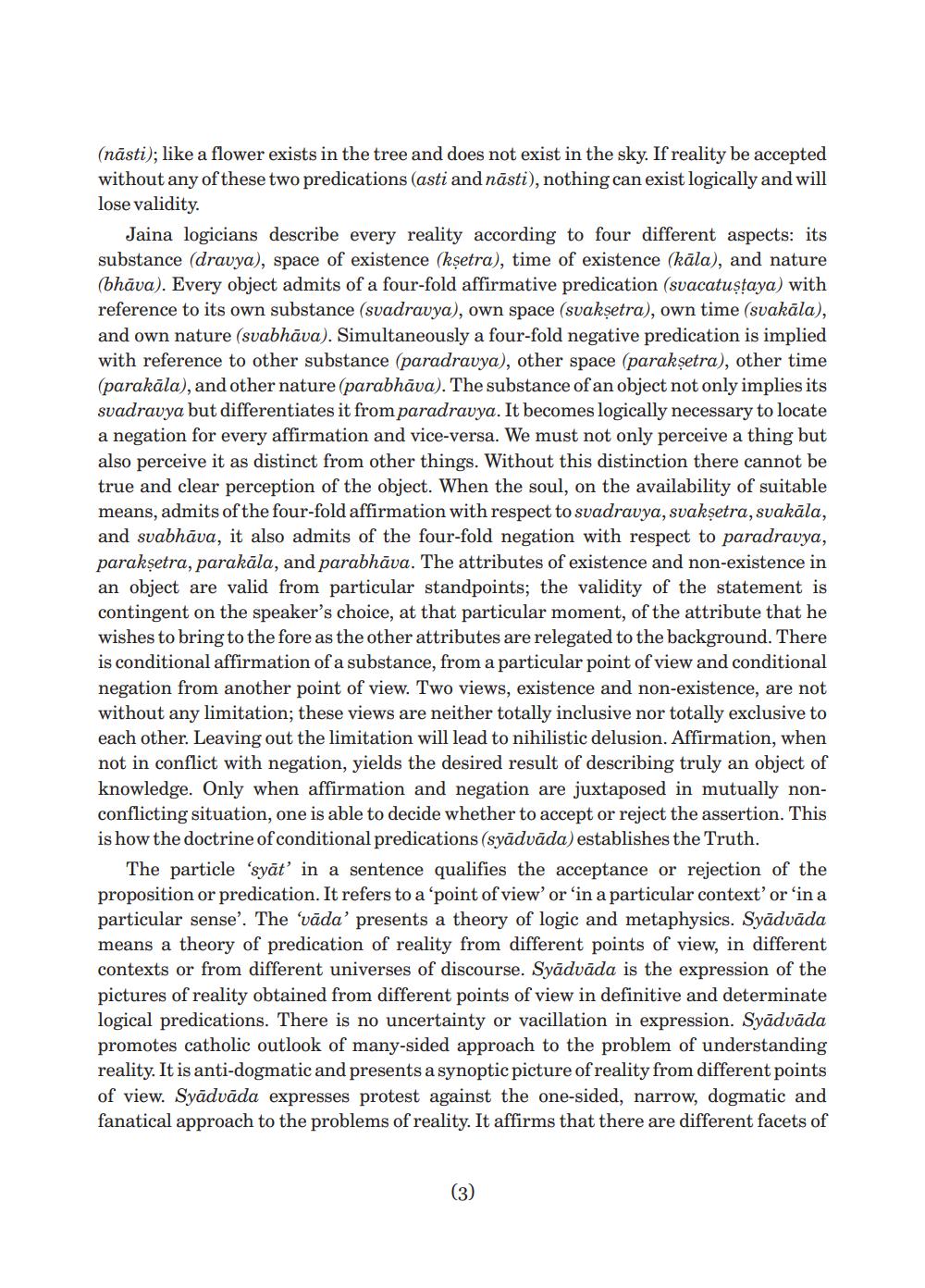________________
(năsti); like a flower exists in the tree and does not exist in the sky. If reality be accepted without any of these two predications (asti and năsti), nothing can exist logically and will lose validity.
Jaina logicians describe every reality according to four different aspects: its substance (dravya), space of existence (kşetra), time of existence (kāla), and nature (bhāva). Every object admits of a four-fold affirmative predication (svacatustaya) with reference to its own substance (svadravya), own space (svakşetra), own time (svakāla), and own nature (svabhāva). Simultaneously a four-fold negative predication is implied with reference to other substance (paradravya), other space (paraksetra), other time (parakāla), and other nature (parabhāva). The substance of an object not only implies its svadravya but differentiates it from paradravya. It becomes logically necessary to locate a negation for every affirmation and vice-versa. We must not only perceive a thing but also perceive it as distinct from other things. Without this distinction there cannot be true and clear perception of the object. When the soul, on the availability of suitable means, admits of the four-fold affirmation with respect to svadravya, svakşetra, svakāla, and svabhāva, it also admits of the four-fold negation with respect to paradravya, parakşetra, parakāla, and parabhāva. The attributes of existence and non-existence in an object are valid from particular standpoints; the validity of the statement is contingent on the speaker's choice, at that particular moment, of the attribute that he wishes to bring to the fore as the other attributes are relegated to the background. There is conditional affirmation of a substance, from a particular point of view and conditional negation from another point of view. Two views, existence and non-existence, are not without any limitation; these views are neither totally inclusive nor totally exclusive to each other. Leaving out the limitation will lead to nihilistic delusion. Affirmation, when not in conflict with negation, yields the desired result of describing truly an object of knowledge. Only when affirmation and negation are juxtaposed in mutually nonconflicting situation, one is able to decide whether to accept or reject the assertion. This is how the doctrine of conditional predications (syādvāda) establishes the Truth.
The particle 'syāt' in a sentence qualifies the acceptance or rejection of the proposition or predication. It refers to a 'point of view' or 'in a particular context' or 'in a particular sense'. The 'vāda' presents a theory of logic and metaphysics. Syāduāda means a theory of predication of reality from different points of view, in different contexts or from different universes of discourse. Syāduāda is the expression of the pictures of reality obtained from different points of view in definitive and determinate logical predications. There is no uncertainty or vacillation in expression. Syādvāda promotes catholic outlook of many-sided approach to the problem of understanding reality. It is anti-dogmatic and presents a synoptic picture of reality from different points of view. Syādvāda expresses protest against the one-sided, narrow, dogmatic and fanatical approach to the problems of reality. It affirms that there are different facets of
(3)




